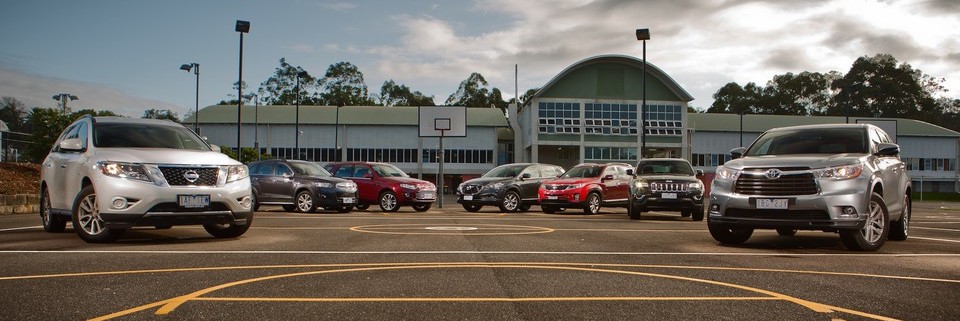 Despite the cheap gasoline prices and an overall shift towards crossovers and SUVs across the board, we can still see a growing preference for smaller sizes: the larger the mainstream SUV segment, the slower its growth rate in the first quarter of 2016. If sales of subcompact crossovers in the US boomed with an increase of 162,5% and sales of compact crossovers in the US outgrew the market with a plus of 4.9%, midsized SUVs added just 3.7% to their volume in the same period of last year. Total segment sales stood at 412,039 units. And while the two smaller segments both welcomed a new leader, the Ford Explorer still tops the charts for midsized SUVs in the US, thanks to sales up 8%, a similar growth rate as its nearest two competitors Jeep Grand Cherokee and Toyota Highlander.
Despite the cheap gasoline prices and an overall shift towards crossovers and SUVs across the board, we can still see a growing preference for smaller sizes: the larger the mainstream SUV segment, the slower its growth rate in the first quarter of 2016. If sales of subcompact crossovers in the US boomed with an increase of 162,5% and sales of compact crossovers in the US outgrew the market with a plus of 4.9%, midsized SUVs added just 3.7% to their volume in the same period of last year. Total segment sales stood at 412,039 units. And while the two smaller segments both welcomed a new leader, the Ford Explorer still tops the charts for midsized SUVs in the US, thanks to sales up 8%, a similar growth rate as its nearest two competitors Jeep Grand Cherokee and Toyota Highlander.
 Ford’s second entry in this segment, the redesigned Edge, is the fastest growing model in the top-9 with sales up 53% and moving from 8th place to 4th place, while the former #3 of the segment, the also redesigned Pilot is the biggest loser in the top-10 and drops to 5th place as the model suffers from supply issues. The Toyota 4Runner is on track to have its best year in this millennium with an increase of 16%, and overtakes the two South-Korean entries, both losing volume in this growing segment. The Kia Sorento drops 8% on last year when the second generation was still fresh, and the Hyundai Santa Fe is down a worrying 35%, possibly cannibalized by the successful launch of the new generation Tucson, which is one size smaller. The Santa Fe drops from 7th place to #13.
Ford’s second entry in this segment, the redesigned Edge, is the fastest growing model in the top-9 with sales up 53% and moving from 8th place to 4th place, while the former #3 of the segment, the also redesigned Pilot is the biggest loser in the top-10 and drops to 5th place as the model suffers from supply issues. The Toyota 4Runner is on track to have its best year in this millennium with an increase of 16%, and overtakes the two South-Korean entries, both losing volume in this growing segment. The Kia Sorento drops 8% on last year when the second generation was still fresh, and the Hyundai Santa Fe is down a worrying 35%, possibly cannibalized by the successful launch of the new generation Tucson, which is one size smaller. The Santa Fe drops from 7th place to #13.
The redesigned Nissan Murano is the fastest growing model in the segment with sales up 63% and closing in on its stablemate Nissan Pathfinder. The Dodge Durango is on its way to the best year of the current generation and passes the GMC Acadia, of which the new, smaller and lighter generation has already been revealed.


